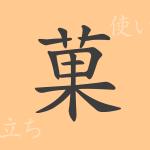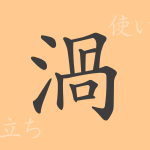In Japanese writing, Kanji play a role that goes beyond mere characters. Each Kanji carries a rich history and meaning, representing the deep layers of culture and language. The Kanji “貨” (Ka) is no exception. In this article, we will delve into the origins, meanings, and usage of the Kanji “貨” (Ka), as well as its application in the Japanese language. Let’s explore the allure of “貨” (Ka) as a common Kanji in Japan together.
The Origins of 貨 (Ka)
The Kanji “貨” (Ka) has been used since ancient times to represent property and currency. This character symbolizes ancient commercial transactions where shells were used as money, and its shape is inspired by a shell motif. Since shells were the fundamental unit of trade and a means of value exchange, “貨” (Ka) has become an important Kanji associated with economic activity.
Meanings and Usage of 貨 (Ka)
The Kanji “貨” (Ka) encompasses several meanings related to property and goods, such as “cargo” and “currency.” In economic contexts, it often refers to products or money and is used in various commercial activities in daily life. Additionally, “貨” (Ka) functions in combination with adjectives and verbs to indicate monetary value.
How to Read 貨 (Ka), Stroke Count, and Radical
The reading and structure of the Kanji “貨” (Ka) reflect its historical usage.
- Reading: The on’yomi is “か” (Ka), and there is no particular kun’yomi.
- Stroke Count: 11 strokes
- Radical: 貝部 (Kaihen) or shell radical
Phrases and Proverbs Using 貨 (Ka) and Their Meanings
There are many idioms and phrases in Japanese that include “貨” (Ka), which are useful for expressing concepts related to economy and value. For instance, “貨幣経済” (Kaheikeizai) refers to an economic system that uses currency, while “通貨膨張” (Tuukaboutyou) denotes the devaluation of currency. The expression “貨を積む” (Ka-wo-tu-mu) means to load goods onto a ship, indicating a fundamental process in commercial activities.
Conclusion on 貨 (Ka)
The Kanji “貨” (Ka), in its shape, meaning, and application, is deeply rooted in Japanese language and culture. This character, symbolizing economic activity, has conveyed essential concepts throughout history that are integral to our lives. Even today, “貨” (Ka) continues to be widely used in contexts ranging from economic news to everyday conversations. Thus, the way a single Kanji can encapsulate so much information and cultural value is indicative of the charm of the Japanese language.

























